

 |
 |
 |
 |
 |
 |
 |
A galaxy is a massive, gravitationally bound system that consists of stars and stellar remnants, an interstellar medium of gas and dust, and an important but poorly understood component tentatively dubbed dark matter. Galaxies can range in size from as few as ten million stars to over a hundred trillion. Galaxies have historically been classified by their basic shape. The most well known galaxies are elliptical galaxies
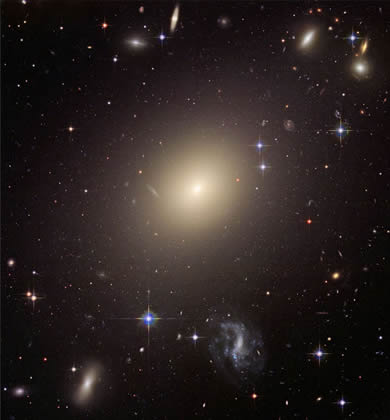
and spiral galaxies.
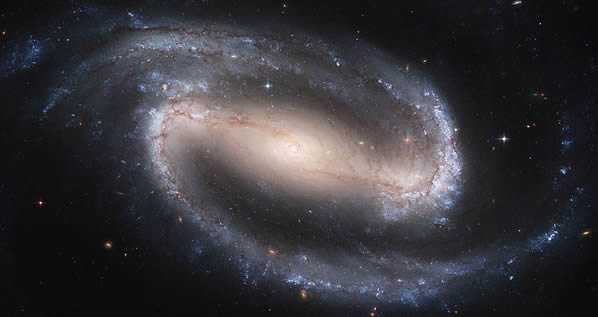
The Milky Way Galaxy, the one in which our Solar System resides, is thought to be a spiral galaxy. There are other shapes of galaxies in the Universe as well, though these shapes are often lumped into the classification of irregular galaxies. Irregular galaxies often do not have any coherent shape, which is usually caused by gravitational interference with another galaxy. This interference usually leads to the galaxies colliding and merging over several billion years, and can often cause the creation of a starburst galaxy, which is a galaxy that is seen to have massively stepped up star production. What lies at the center of a galaxy is unknown, though most scientists speculate that there exists some kind of supermassive black hole.
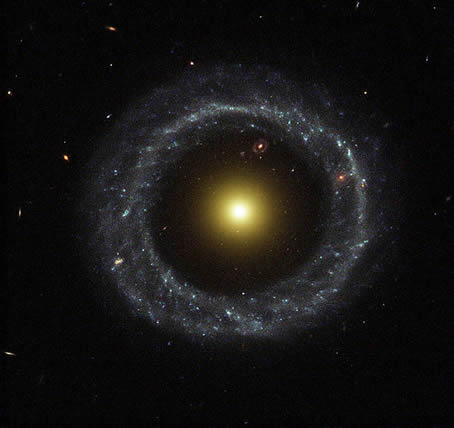
Galaxies are most often found clumped together with other galaxies in what are known as groups. These groups form clusters, which in turn form fractal-like superclusters which snake through the Universe in long bands. The Milky Way Galaxy belongs to the Local Group, which consists of 29 other galaxies. Only two of these other galaxies are similar to the Milky Way, and the other 27 are all considered satellite galaxies. These are comaparatively smaller galaxies, mostly dwarf galaxies who orbit the three main galaxies in the group. The two main galaxies other than the Milky Way are the Andromeda Galaxy, and the Triangulum Galaxy, both of which are also spiral galaxies. The Milky Way Galaxy is thought to have the largest amount of satellite galaxies, followed closely by the Andromeda. It's not clear whether or not the Triangulum is a companion to the Andromeda, but it likely has at least one satellite galaxy.
Within our galaxy, aside from all the planets and stars, are countless other objects and phenomena. Below are just a couple of the more familiar ones.
Nebulae are clouds of dust and gas that form after a star has been extinguished, and are often the staging areas for the creation of new stars. Nebulae are sometimes formed when gasses clump together in the interstellar medium and eventually begin to collapse under their own weight. When this clump of collapsed gas becomes massive enough to become a star, the radiation from the star causes the gas surrounding it to become ionized, making the nebula visible at optical wavelengths.
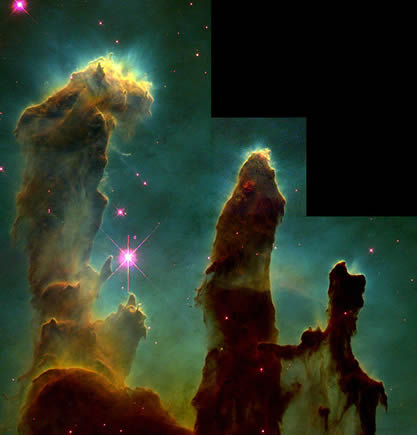
Some nebulae, however, are the result of a massive explostion called a supernova, the death throes of a massive and short-lived star. The most famous of these stellar remnants is the Crab Nebula in the Tauros constellation, which was first observed by John Bevis in 1731 and again by Charles Messier in 1758. It gets its name from Irish astronomer William Parsons, the Third Earl of Rosse, whose initial drawing of the nebula made it look like a crab. The explosion that created the Crab Nebula was observed by astronomers in 1054, who described a "guest star" in the night sky that was visible with the naked eye for almost two years. At the center of the Crab Nebula is a pulsar which is spinning at an incredible rate. Astronomers put the Crab Nebula at roughly 6,300 light years from Earth, and it is expanding at a rate of about 1,500 km/s. Its distance from the planet means that the explosion that astronomers observed almost a millennium ago actually occured 6,300 years before that.
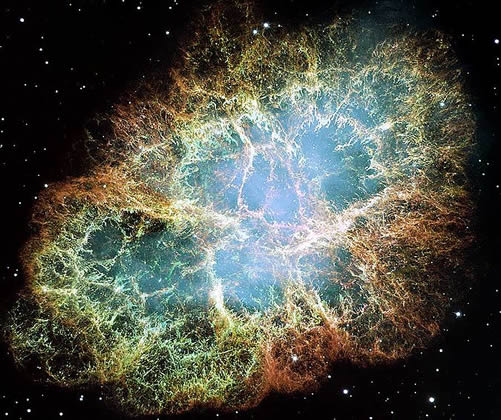
According to the theory of general relativity, a black hole is an incredibly massive and dense object from which nothing, not even light, can escape. Black holes possess such incredibly intense gravity that they produce something called gravitational lensing, which means that spacetime bends around them in much the same way that light bends around a glass lens. Around a black hole there is an invisible surface called the Event Horizon, which marks the point of no return. Though black holes are technically invisible, since they neither emit nor reflect light, it is still possible to detect them, especially when they interact with other cellestial bodies. Astronomers can detect black holes by tracking the movements of stars around a certain point in space. Additionally, when a star moves too close to a black hole, its gas is siphoned off and spirals downward into the void. This action causes the gas to heat up and emit a great deal of radiation that can be detected.
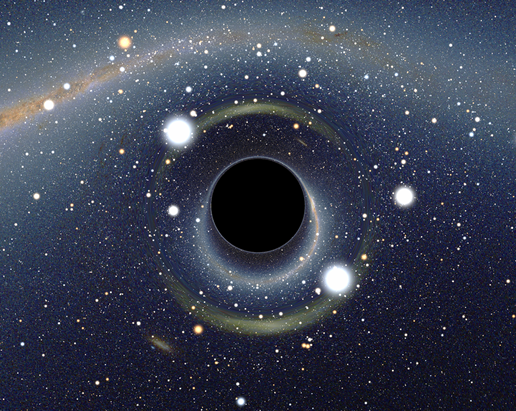
In theory, objects that are pulled into a black hole are sucked in at an ever-increasing rate of speed. If we were to send a spacecraft into a black hole, it would appear to continuously accelerate until finally disappearing. The reason for this is that at some point the craft's speed would exceed the speed of light. After this point it is thought that a number of things may happen. According to general relativity, at the center of a black hole is what is known as a singularity. A singularity is a point where the spacetime curvature becomes infinite. It contains all the mass of the black hole, but also has no volume. In this sense the singularity has infinite density. In a non-rotating black hole, it is impossible to avoid the singularity, and all attempts to do so simply increase the speed at which one gets there. If we sent our spacecraft into a non-rotating black hole, it would first be ripped apart by tidal forces near the center in what is known as spaghettification, or the noodle effect. The craft would become stretched to an almost infinite length and its mass would simply be added to the black hole. In a rotating black hole, the singularity is spread out into a ring shape lying in the plane of rotation. A craft we send into one of these black holes may end up like it did in the non-rotating one, or it may have the ability to avoid the singularity altogether. This gives rise to the worm hole theory, which says that one can exit the black hole on the "other side" in a different spacetime.
Click to travel to the furthest reaches of human knowlegde as we travel to the edge of the Universe!